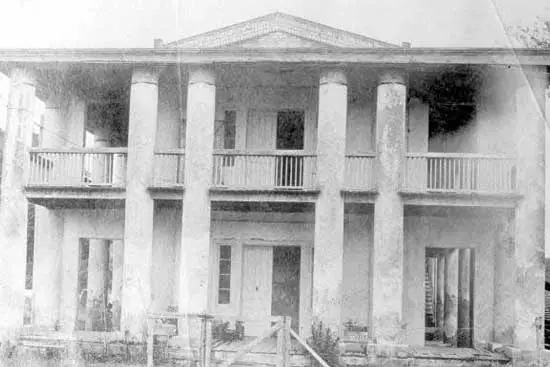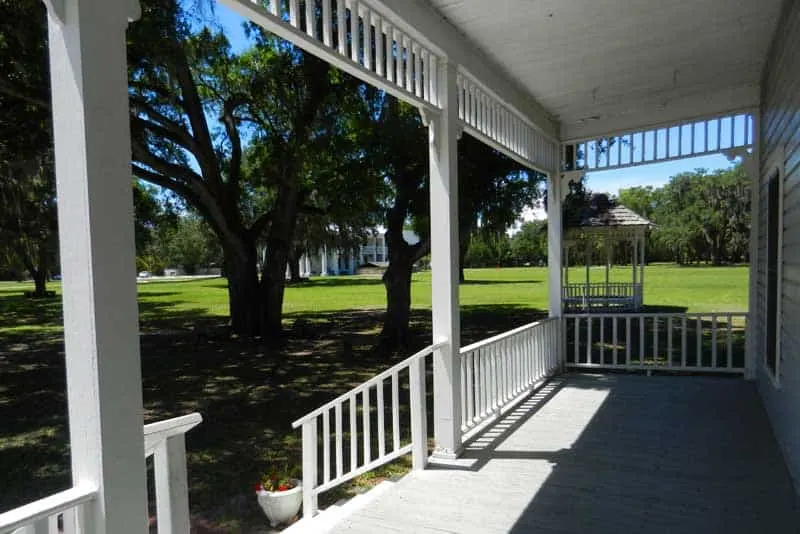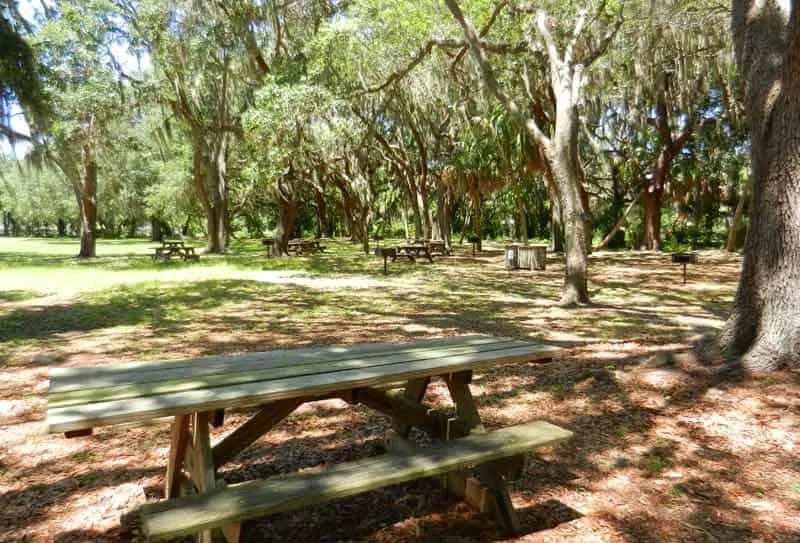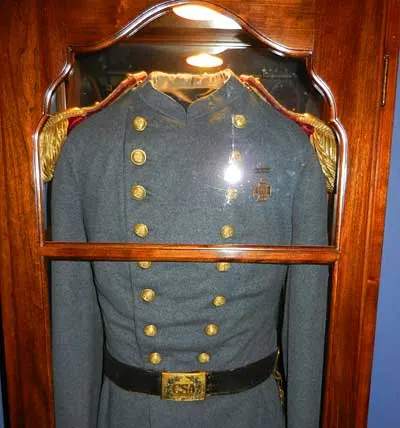I live in South Florida, but not in “the South.” I do not hear Southern accents. I do not see grits on many menus. Iced tea is rarely “sweet tea.” As a result, I forget that I live in a state that actively fought for the Confederacy. It was eye-opening, then, to tour South Florida’s only antebellum mansion, Gamble Plantation Historic State Park, a house with white columns to rival Tara and the site of a dramatic Civil War event.

It’s located near Sarasota, just two miles off I-75, minutes south of the Sunshine Skyway Bridge to St. Petersburg.
The Gamble mansion makes an interesting hour-long stop on a road trip. (My tour included a businessman squeezing in a visit between appointments in Sarasota and St. Pete.)
To go inside the Gamble plantation house, you must take a guided tour, offered for $6 at 9:30 a.m. 10:30 a.m., 1, 2, 3 and 4 p.m. from Thursdays to Mondays. (The visitor center is closed and there are no tours on Tuesday and Wednesday.)
The mansion was built in 1844 and has survived wars, hurricanes and tropical humidity – but just barely. After being used to store fertilizer, it sat vacant in the 1920s, decaying away. The United Daughters of the Confederacy came to its rescue, purchasing the property and deeding it to the state.
Today, the house sits at the center of a park filled with towering live oaks cloaked in Spanish moss, near the 1895 Patten House, a pioneer farmhouse also preserved and maintained by the United Daughters of the Confederacy. Picnic tables are situated under the trees and a small museum tells the Gamble mansion history and exhibits a few Civil War objects. (There’s no fee to visit the grounds or the museum.)
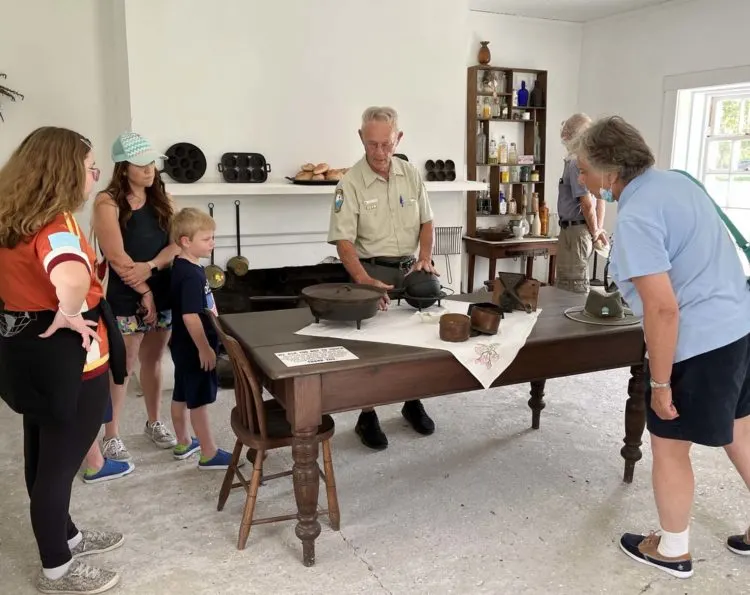
The Gamble Mansion was built shortly after the Second Seminole War ended, opening the area for settlement. Robert Gamble, a major during the war, built a sugar plantation on the Little Manatee River, starting in 1844.
He was a bachelor, and yet he built a lavish 10-room two-story mansion on the Gamble plantation. Its tabby walls are nearly two feet thick and it has wide shaded verandas wrapping around three sides of the house.
The original cistern, which collected water from the mansion roof, remains. All the labor was done by enslaved people, including digging 16 miles of canals, necessary to grow sugar. (One of those original canals runs along the park’s borders.)
Records show that in 1847, Gamble owned 69 enslaved people and by 1855, that number had increased to 151. No slave quarters remain. Gamble only lived there and operated the plantation for 12 years. Deeply in debt, Gamble was forced to sell it (including the then 185 enslaved people) in 1856 after sugar prices sank.
The museum today is furnished with period items, though none are original to the house. A knowledgeable guide takes visitors through the rooms, pointing out such items as a 19th Century piano, the painted floor cloth and a tea caddy that could be locked after use to protect its valuable contents.
Judah Philip Benjamin and the Gamble Mansion
The story that makes the Gamble Mansion famous, though, is its role in 1865 just after the Confederate collapse. The secretary of state for the Confederacy was Judah Philip Benjamin, an unusual and fascinating character. He was a prominent Jewish New Orleans plantation owner and a trusted confidante of Confederate President Jefferson Davis.
After the war, there was a $40,000 reward for his capture. Traveling in disguise, he made his way south, staying at homes of Confederate supporters until he reached Gamble Mansion, then the home of Archibald McNeil, a famous blockade runner, where he took refuge for two weeks. With McNeil’s help, he stole away on a boat to Bimini.
After stops in Nassau, Havana and St. Thomas, he sailed to London, where he was an immediate success as a barrister. He had a long, lucrative career and was much admired by his British colleagues. The United Daughters of the Confederacy in the Sarasota region, who saved the house, are the Judah P. Benjamin chapter and the park is designated the Judah P. Benjamin Confederate Memorial.
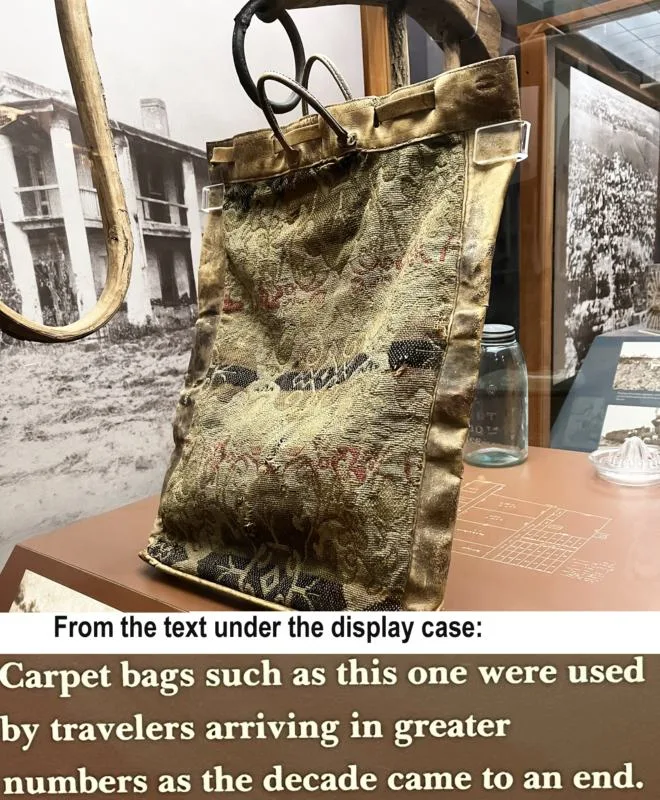
Gamble Plantation handles sensitive topics
As an acquisition from the United Daughters of the Confederacy, the Gamble Plantation State Park works carefully to get the history right and in neutral terms. The UDC was highly influential in the property through much of the 20th Century, seeing the site as one devoted to Confederate history.
Today, the Florida Park Service keeps the focus on the history of the property and the people who lived there.
A carpet bag on display, once probably used to tell a Confederate narrative, is descibed in the blandest possible terms — carpet bags were used by travelers after the Civil War, it explains. There’s no explanation that “carpetbagger” was a derogatory term for Northerners who came South during Reconstruction.
Also in the museum, there is on display a Census Bureau document listing the enslaved people on the plantation by name. It is referenced during the tour with a solemn pledge from the ranger guide: “We know their names and we honor every one of them.”
Gamble Plantation Historic Park
3708 Patten Ave.,
Ellenton, FL 34222
(942) 723-4536
Tours are $6 for adults; $4 for children. The visitor center/museum is open Thursday through Monday, 9 a.m. – 5 p.m. but closed for lunch 11:45 a.m. to 12:45 p.m., Thursday through Monday. Visitor center is closed and tours are not available on Tuesday and Wednesday as well as the holidays of Thanksgiving, Christmas and New Year’s Day. The park is open 365 days a year until sunset.
If Civil War history interests you, you might be interested in two other rare Antebellum plantation homes in Florida about which we’ve written: the Kingsley Plantation, which is much older, going back to when Spain ruled Florida, and Chinsegut Hill near Brooksville, a fascinating spot that tells the stories of both white and black people over its 180 year history.
More about Gamble Mansion for history buffs
- A writer for ghosttowns.com says intrepid history fans can seek out the ruins of the Gambler plantation’s sugar mill: “The ruins of the mill after it burned down during the Civil War are three-quarters of a mile from the house. They are not restored and call for some walking into a jungle but it is not difficult and quite interesting,” the site says.
- An ancient Native American ceremonial mound is preserved in the nearby 10-acre Madira Bickel Mount State Archaeological Site.
More things to do near the Gamble Mansion
We love the beaches and overall ambiance of Anna Maria Island, about a half hour a way. Here’s a guide to things to do on Anna Maria Island.
Near Anna Maria Island, the picturesque fishing village of Cortez is an outstanding place to get fresh seafood and enjoy the ambiance of Old Florida. Here’s a guide to visiting Cortez, including my favorite fish shack there.
DeSoto National Memorial Park, 8300 Desoto Memorial Hwy, Bradenton, FL 34209, is a national park, although quite small and modest. It has a spectacular location on the Bradenton River and a well-done three-quarter-mile trail along the water and through the mangroves, telling the story of the indigenous people and the Spanish explorers. There is a small museum. It’s free.
Kayaking Frog Creek in Palmetto. This is one of the best paddles you’ve never heard of. Your launch point is hidden behind a private campground in Palmetto. You can launch your own kayak ($10 fee) or rent one. What makes this paddle remarkable is that in one trip, it encompasses two completely different environments — a canopied fresh water cypress and oak creek with open water areas flowing into tidal salt water mangrove tunnels. Here’s a Florida Rambler story on Frog Creek.
Fort DeSoto Park: One of Florida’s best beaches and a historic fort is a half hour away. Passe-a-Grille, an Old Florida neighborhood on St. Pete Beach is a great beach town.
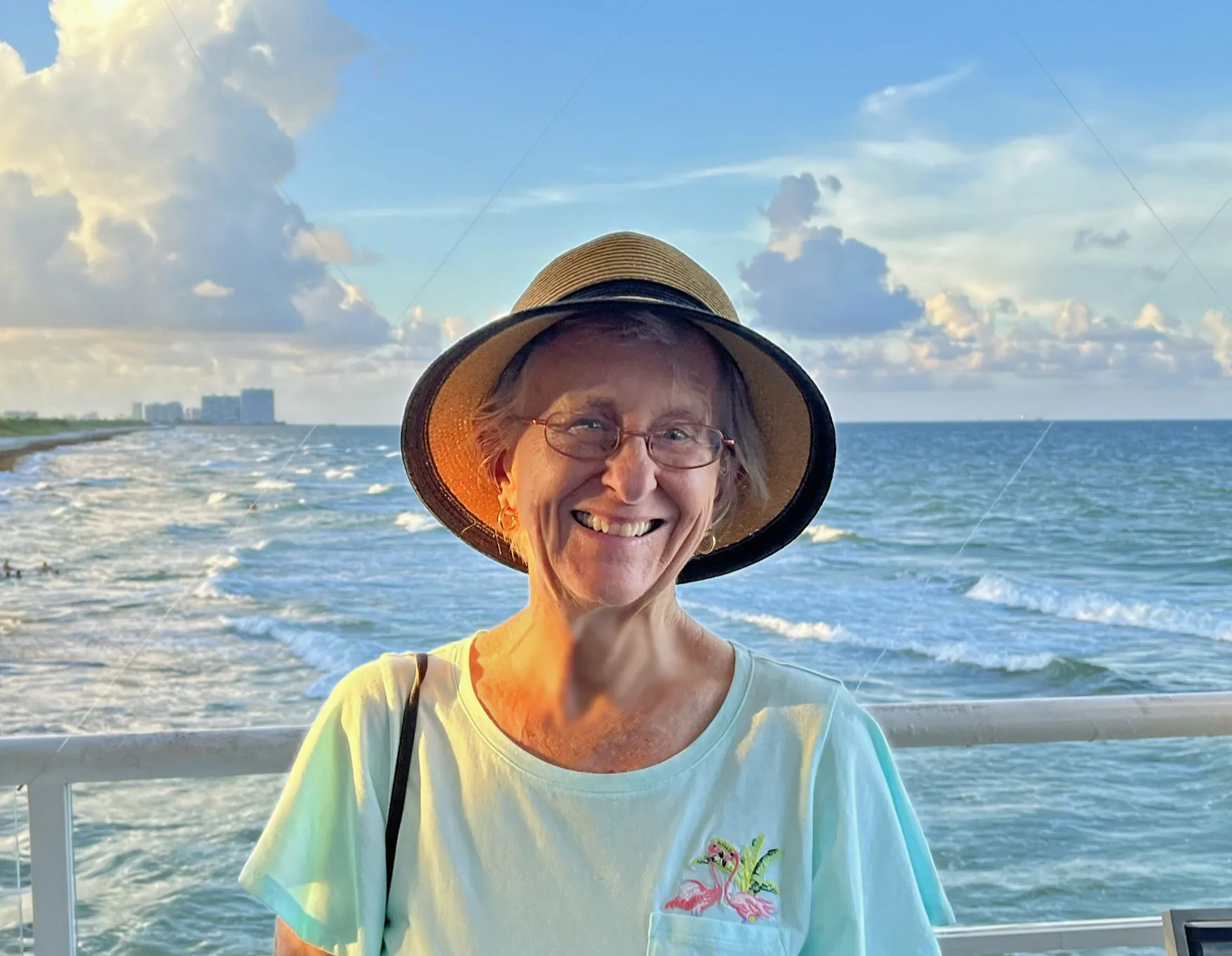
The author, Bonnie Gross, travels with her husband David Blasco, discovering off-the-beaten path places to hike, kayak, bike, swim and explore. Florida Rambler was founded in 2010 by Bonnie and fellow journalist Bob Rountree, two long-time Florida residents who have spent decades exploring the Florida outdoors. Their articles have been published in the Sun Sentinel, the Miami Herald, the Orlando Sentinel, The Guardian and Visit Florida.

